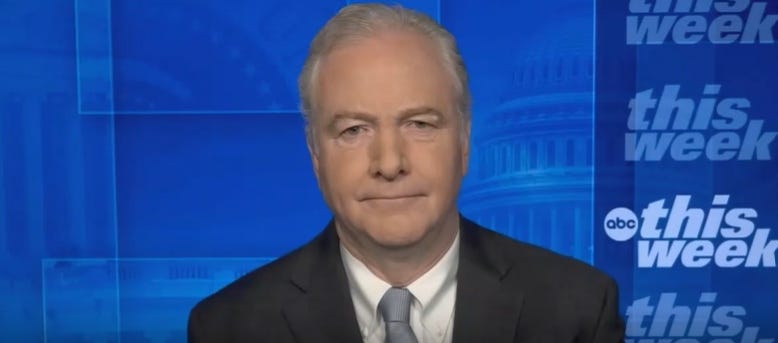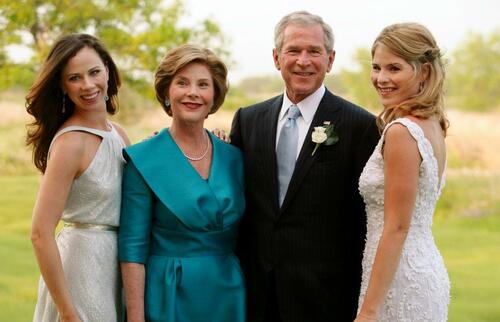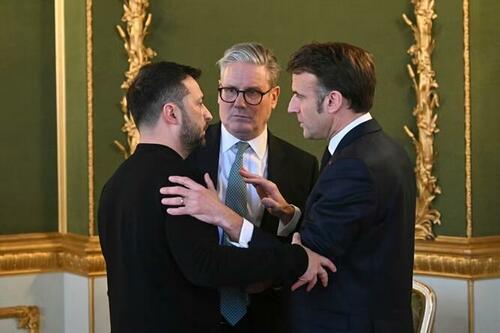QUESTION: I am a history buff myself. I have never heard that Russia came to the aid of the United States during the Civil War to protect us from the British and the French. What is your source for such a statement?
FC
ANSWER: I learned in high school that they do not teach what goes against their agenda. I had to read The Great Crash by Galbraith. Then I stumbled upon Herbert Hoover’s Memoirs. It opened my eyes to the fact that they selectively teach propaganda. They were teaching Keynesian Economics, the business cycle is not definitive, so the state can manipulate us as they desire. After that experience, my study has never even been TRUST BUT VERIFY; it was converted to QUESTION EVERYTHING BEFORE VERIFYING.
This is the issue of Harper’s Weekly from October 17th, 1863. I have verified this account that Russia protected the Union forces of the United States against the British and French, who claimed to be neutral, but covertly were supporting the Confederates.
Emperor Napoleon III personally favored the Confederacy, hoping to secure Southern cotton for French textile mills and establish a French-aligned buffer state to protect his imperial ambitions in Mexico. France refused to recognize the Confederacy without British cooperation, which never materialized. Napoleon III did propose a joint mediation with Britain and Russia in 1862, including a six-month armistice and opening Southern ports. The Union angrily rejected this, viewing it as pro-Confederate interference by the French.
Like the EU pretending not to be involved in the Ukraine war, France was allowing the Confederacy to purchase weapons and warships. The French ministers did object to Napoleon III and went as far as the French government initially blocked the ironclad CSS Stonewall. Napoleon’s Mexican campaign (1861–1867) was aimed at exploiting the U.S. division by installing Maximilian I as emperor. Confederate independence would have shielded this venture from Union retaliation.
Britain declared neutrality in May 1861. It did recognize the Confederacy as a separate belligerent, granting it the right to contract loans and use blockades, but did not recognize it as a sovereign nation. This angered the Union. Aristocrats and conservative elites such as Chancellor William Gladstone did sympathize with the Confederacy, seeing parallels with Southern plantation society and even old scores for the American Revolution.
Working-class Britons, particularly in textile regions, largely opposed slavery despite economic hardship from the “cotton famine.” Lincoln praised Lancashire workers for refusing Confederate cotton, which was on religious grounds.
British private firms smuggled arms, luxuries, and supplies into Southern ports in exchange for cotton and tobacco. Then there was the warship construction carried out in the British shipyards. They constructed the CSS Alabama, leading to the post-war Alabama Claims, where Britain paid the US $15.5 million for damages for that action.
Then there was the Trent Affair of 1861. That was a near-war crisis that erupted when the U.S. Navy seized Confederate diplomats from a British ship. Britain demanded their release, and Lincoln complied to avoid war.
By 1863, France and Britain found alternative cotton sources (e.g., India, Egypt). However, the Union threatened war if Europe recognized the Confederacy. That even put Canada and the Caribbean colonies all at risk. Lincoln’s Emancipation Proclamation (1863) solidified moral opposition to the Confederacy. That followed Tsar Alexander II, who freed the Russian serfs through the Emancipation Manifesto, signed on March 3, 1861, and was publicly announced on March 5, 1861. President Abraham Lincoln issued the Emancipation Proclamation on January 1, 1863, declaring, “that all persons held as slaves” within the rebellious areas “are, and henceforward shall be free.” The fact that Russia took that action first was what led to pressure on Lincoln for the Emancipation Proclamation, as well as the start of the war, which took place about one month later on April 12, 1861.
Post-War Repercussions were profound. The U.S. forced France to withdraw from Mexico (1867), leading to Maximilian’s execution. Britain paid reparations for warship damage.
Our enemies were really Britain and France during the early 19th century. Of course, there were the Napoleonic Wars, and Napoleon even attempted to invade Russia. Clearly, France and Russia were direct enemies (e.g., Napoleon’s disastrous invasion of Russia in 1812). Then you had the never-ending Britain vs. France, who to this day still harbor resentment for being each other’s primary enemy throughout the wars.
Britain & Russia were allies against Napoleonic France as part of the coalitions. That was no different from Stalin joining the Allies against Germany.
Nonetheless, the Post-Napoleonic Era & The Holy Alliance (Post-1815) saw Russia’s role under Tsar Alexander I, became the dominant conservative power in Europe, leading the Holy Alliance (with Austria and Prussia) to suppress liberal revolutions. Britain’s stance under Castlereagh and later Canning distanced itself from the Holy Alliance’s interventionist policies. While not directly fighting Russia, Britain often diplomatically opposed Russia’s attempts to dominate European politics and suppress revolutions, seeing it as a threat to the balance of power and British interests. It was a quasi-proxy war again.
Then there was the Eastern Question & The Crimean War (1853-1856). That core conflict remains the most significant example of direct Anglo-French opposition to Russia. What is often overlooked is that although the “official” position of the US in the Crimean War was neutral, the United States supported Russia during the 1863 Crimean War, allowing some 30 American surgeons to “volunteer” to serve in the Russian military. Russia lost that war to the alliance of Britain, France, and the Ottoman Empire. Then Russia faced yet another challenge a few years later. In 1863, there was an uprising in the regions of the former Polish-Lithuanian Commonwealth under Russian domination. That became a guerrilla war against Russia, and they responded by crushing the rebellion and even punishing the nobility by confiscating their lands. The immediate outcome of the 1863 was a devastating military defeat, followed by ruthless repression, the complete elimination of any vestige of autonomy, and the onset of an intense and systematic decades-long campaign of hating Russians thereafter. This was no doubt a residual from the century before, when Sweden made its most significant attempt to invade Russia during the Great Northern War (1700-1721), specifically in the years 1707-1709.
The Polish-Lithuanian Commonwealth was a major theater of war for much of the conflict. Swedish King Charles XII invaded and spent years campaigning there. Charles XII forced the Polish nobility to depose their elected king, Augustus II (Elector of Saxony), and install a Swedish puppet, Stanisław Leszczyński (1704). Russia responded, seeking to expand its influence at the expense of the declining Ottoman Empire, particularly aiming for control over the Black Sea straits and protection of Orthodox Christians in Ottoman territories who were being persecuted.
Anglo-French formed a stiff opposition to Russia for its wealth. Britain feared Russian expansion would threaten its Mediterranean routes (especially to India) and the European balance of power. France, under Napoleon III, sought to revive French prestige, protect Catholic interests in the Ottoman Empire (countering Russia’s Orthodox claims), and challenge Russian power. Thus, Britain and France formed a military alliance with the Ottoman Empire and fought a major war against Russia in the Crimea. The war ended with a Russian defeat.
All of this produced a prolonged strategic rivalry and espionage contest centered on Central Asia and South Asia (Afghanistan, Persia, Tibet). Britain was obsessed with protecting its “jewel in the crown,” India, from any perceived Russian threat of invasion or influence. While it rarely resulted in direct war between the two empires, it involved intense diplomatic maneuvering, proxy conflicts, and military expeditions. France was not a major player in this specific rivalry.
The Franco-Russian rapprochement came after Germany’s defeat of France in 1871 and the subsequent formation of the Triple Alliance (Germany, Austria-Hungary, Italy). France at that time actively sought an ally against the German threat. This led to the Franco-Russian Alliance (1894), a fundamental shift aligning France and Russia against the German-led bloc. As you can see, this was like a bunch of cross-dressers switching sides.
Anglo-Russian tensions continued, keeping Anglo-Russian relations in opposition. However, facing the rising power of Germany, Britain also began to realize that the wealth of Russia might be set aside given the increasing threat from Germany. This eventually led to the Anglo-Russian Entente (1907), settling colonial disputes in Central Asia and aligning Britain with France and Russia in the Triple Entente against the Triple Alliance.
Consequently, Britain and France were absolutely opposed to Russia at many key points and only tolerated the Russians when they needed help against Germany. Britain maintained a deep strategic rivalry with Russia throughout the century due to concerns over India and Asia. Meanwhile, Britain often diplomatically opposed Russia’s conservative dominance in Europe early in the century. The balance of power shifted dramatically in the last decade of the 19th century. The rise of Germany drove former rivals France and Russia into a formal alliance (1894), and Britain later joined them in the Triple Entente (1907), setting the stage for World War I.
As you can see, there were periods of cooperation early against Napoleon between Britain and Russia. Still, a complete reversal of alliances unfolded when the glimmer of Russia’s wealth caught their eye, and they did not need their support.
By 1917, Germany faced a two-front war against the Allies. They decided that if they could orchestrate a Russian withdrawal, it would allow Germany to concentrate forces on the Western Front. German officials viewed Lenin as a “plague bacillus” to infect Russia from within, aiming to trigger internal collapse and end Russia’s war participation. The idea was hatched by the German Foreign Secretary Richard von Kühlmann and General Erich Ludendorff. Alexander Parvus (a Russian-German businessman and former socialist) proposed the scheme to the German Foreign Office, drafting a 23-page revolutionary roadmap and securing initial funding of 2 million marks for Bolshevik propaganda.
On April 9th, 1917, Lenin and 31 revolutionaries departed Zurich on a German-chartered train. The group crossed Germany in a “sealed” carriage with extraterritorial status (marked by chalk lines), avoiding passport checks. Non-Bolsheviks were included to pretend there was no intentional German collaboration or plot to create the Russian Revolution. The German High Command prioritized the train, even delaying Crown Prince Wilhelm’s transport. Officers escorted the group to the Baltic Sea, from where they proceeded via Sweden and Finland. The trip concluded at Petrograd’s Finland Station on April 16th, 1917.
Germany funneled over 50 million marks to the Bolsheviks from 1917 to 1918 to fund the revolution (2.5 million 20-mark gold coins at 1/4 ounce of gold; about $2.125 billion today). This financed Pravda (Bolshevik newspaper), arms smuggling, and propaganda to undermine the Russian Provisional Government. Acting as a middleman, Parvus facilitated German funds and border logistics (e.g., bribing Finnish guards). Lenin, distrusting Parvus, later excluded him from Soviet politics. In the end, it was Germany that funded the Russian Communist Revolution to keep them out of the war.
The United States purchased Alaska from Russia in 1867. The treaty was signed on March 30th, 1867. It was officially transferred on October 18th, 1867, for $7.2 million (about 2 cents per acre). Russia was struggling to maintain its distant colony after the costly Crimean War (1853–1856). There was also the fear that the British would just seize the territory, adding it to Canada. Selling to the U.S. was preferable.
At the time, their main commerce was the fur trade, which had declined, and Russia saw little potential for future development. Secretary of State William H. Seward believed in Manifest Destiny, meaning that the U.S. must expand its territory across North America to counter the British. Securing the Pacific Northwest and gaining a foothold near Asia for trade/military influence was a key point that Seward maintained. He did suspect riches in fish, timber, fur, and minerals. Gold was eventually discovered, but not until the 1890s. The main strategy was to prevent British dominance in the region.
Steward was mocked. They called it “Seward’s Folly” or “Seward’s Icebox,” with critics calling Alaska a worthless frozen wasteland. That perception did not change until after gold was discovered in the 1890s, followed by oil discoveries proving it was of immense value compared to the Louisiana Purchase. Eventually, Alaska became a U.S. territory in 1912 and the 49th state in 1959. This was another act where the United States helped Russia in our warm relations against the European powers pre-1917.
While the US and Russia were actually strategic partners with significant cooperation and friendship (most notably during the American Civil War and the sale of Alaska), and became cobelligerents in WWI for a brief period in 1917 after the Tsar was overthrown, they were never formal allies bound by a mutual defense treaty before the 1917 Revolutions. Their relationship was characterized by positive diplomacy, mutual interests at key junctures, and the absence of major conflict, but not a committed alliance. The deep ideological divide and differing geopolitical priorities prevented a formal alliance structure.
Our Neocons hate Russians as a people simply because the Germans funded the Revolution, and the Russian people have been the victims. Naturally, the polls in Russia show that only the elderly miss the Communist days when the state just took care of them and they did not have to make any decisions. Among the 60+ generation, approximately 58% of Russians regret the collapse of the Soviet Union, with many indicating a preference for the economic stability and social security associated with that period. The younger generations (18-24) are less likely to express a desire to return to communism, with polls coming in at most 20%. Our Neocons are generally 70+ in age. Like the older Russians, they too have refused to accept that anything has changed. This is the generation pushing us toward World War III simply because they hated communists, who no longer exist.













